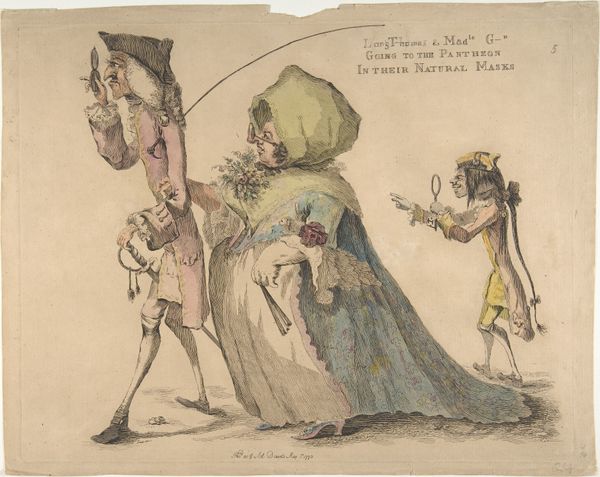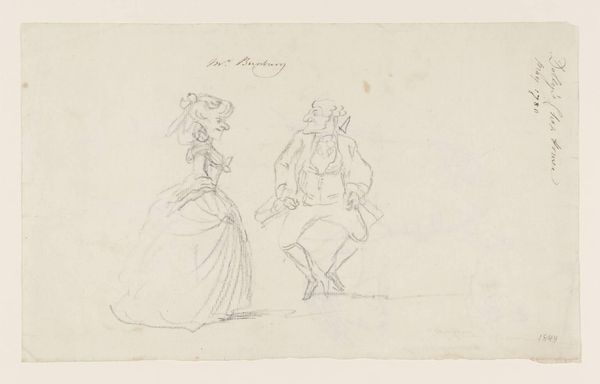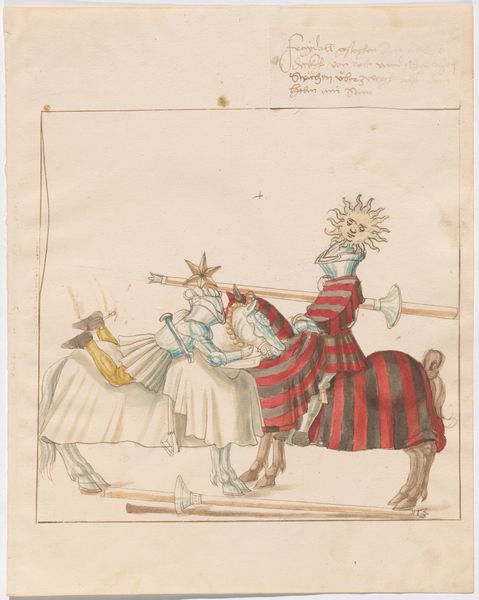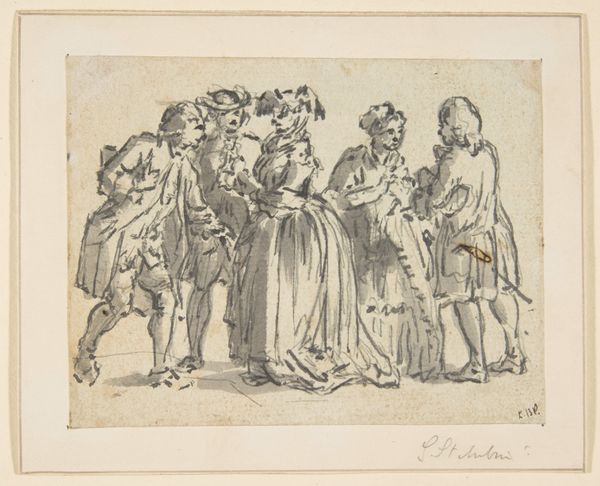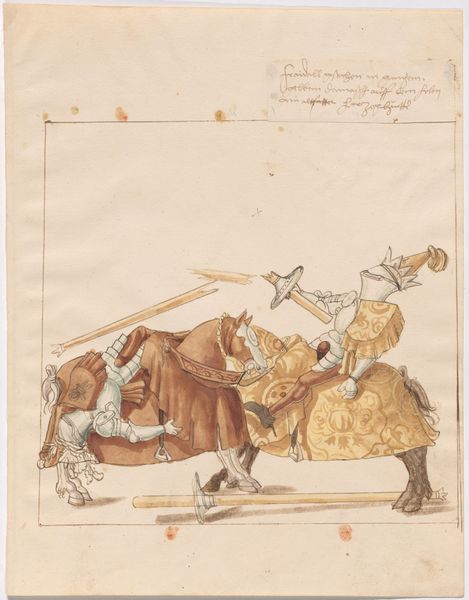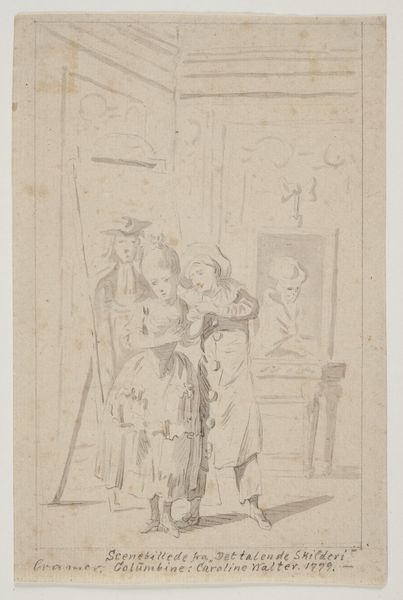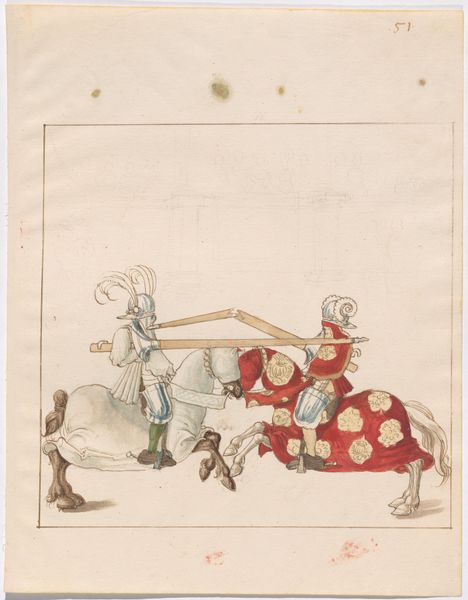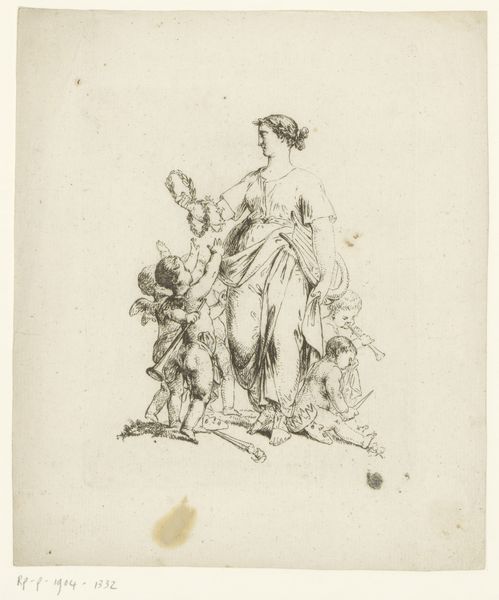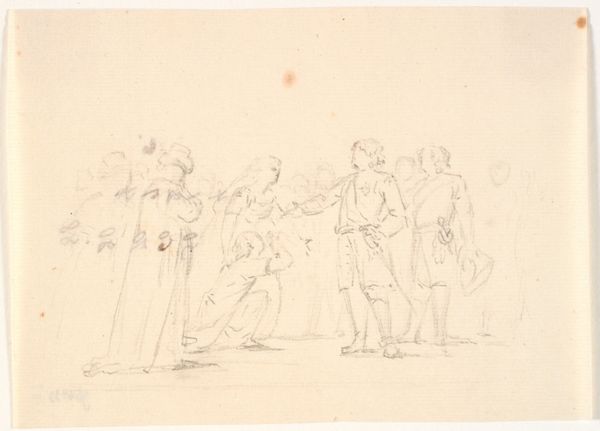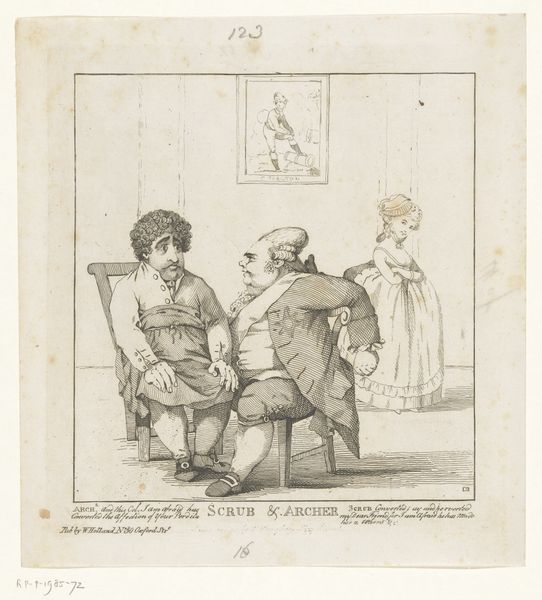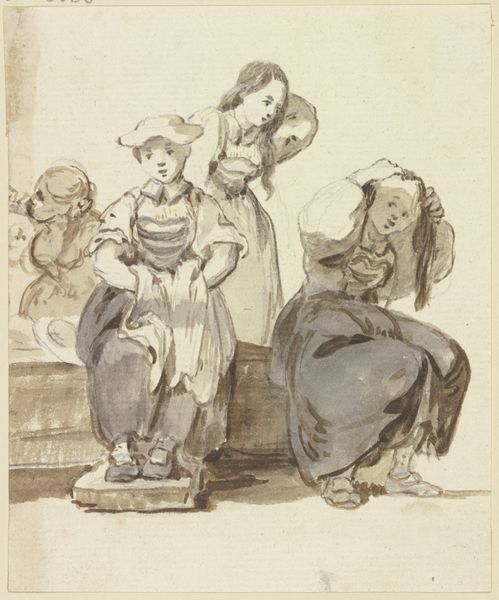
Scenebillede fra Johan Herman Wessels "Kærlighed uden Strømper" 1772 - 1782
0:00
0:00
Dimensions: 218 mm (height) x 203 mm (width) (bladmål)
Curator: Oh, what an intriguing little drawing. Peter Cramer created this pen and watercolor piece, "Scenebillede fra Johan Herman Wessels 'Kærlighed uden Strømper,'" sometime between 1772 and 1782. Editor: It feels so…spontaneous. There's a real dynamism in the lines, and the almost careless splashes of watercolor give it a lighthearted mood, almost like a passing fancy caught on paper. Curator: Exactly. It's very much in keeping with the Rococo style; the focus wasn't so much on creating a perfect image but rather capturing the fleeting moment, the movement of a scene. Wessel's play, a comedy satirizing sentimental drama, was very popular then. Cramer's rendering participates in the debates of that cultural moment. Editor: The composition is quite engaging, too. The three figures, seemingly caught mid-action, create a sort of visual triangle. Your eye jumps from the flamboyant gentleman on the right to the poised lady, and then down to the smaller figure, almost an echo of the adult one. It guides you through the implied narrative. Curator: That echo highlights societal expectations and class distinctions so evident during this period. The clothing, hairstyles, all tell of the elite engaging in dramatic play but held aloft by societal conventions that dictate status. Editor: It's the restrained color palette that is compelling to me. The artist deliberately restricts the palette, employing soft pastels that evoke a dreamlike quality, enhancing its theatrical atmosphere and intimate charm. Curator: Agreed. And perhaps speaks to how art played a crucial role in shaping the values of the late 18th century, prompting us to reflect critically on its inherent power and place. Editor: It’s a work that initially feels light but then offers depth the more one looks at the careful balance between spontaneity and constructed narrative, both of which speak to me. Curator: Indeed, seeing the performance, understanding its purpose within the world of the theater at the time—it offers another layer of interpretation that underscores how much these images shaped perception.
Comments
No comments
Be the first to comment and join the conversation on the ultimate creative platform.
